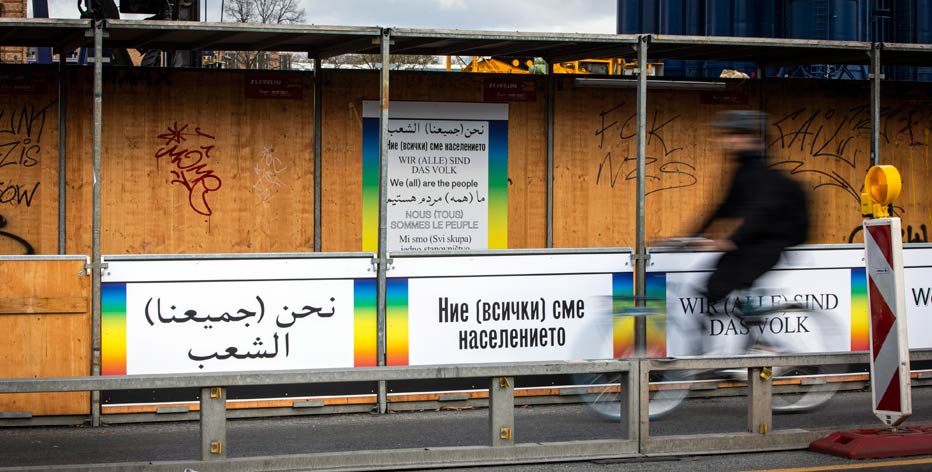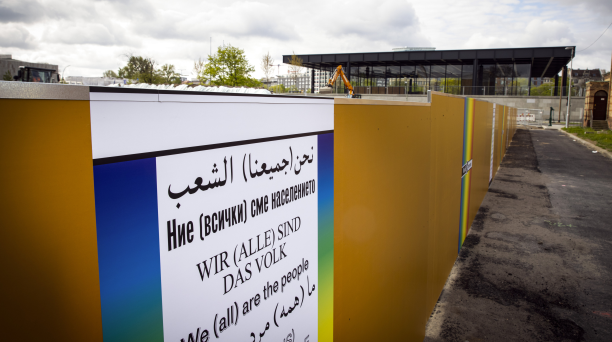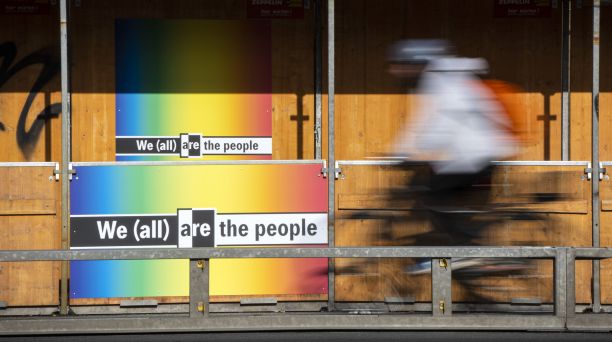The construction fence in front of the new museum building of the Nationalgalerie will showcase rotating artistic-graphic designs in the future. The works will always be related to the collection’s focal point in the new building: the 20th century from an artistic perspective. Viewers will see and experience that a new social space, a place of art that wants to tie into Berlin’s urban society, is being created here.
The Nationalgalerie will use a work by the artist Hans Haacke to start “Art on the Construction Fence,” in order to set an example for an open, culturally diverse and tolerant society.
The project is supported by the Federal Commissioner for Culture and the Media.


